A to Z – HIGHLIGHTS OF DERBY AND DISTRICT – PART 7
The A to Z – highlights of Derby and District is a 19-part series and will be published weekly.
Friar Gate County Gaol Museum – Horsley

FRIAR GATE COUNTY GAOL MUSEUM
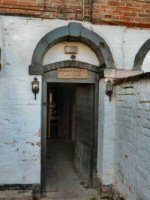
Derby County Gaol on Friar Gate was opened in 1756 and is now a museum. It replaced the town gaol, which had been located on the Corn Market for almost 200 years alongside Markeaton Brook. Although the gaoler’s accommodation was at street level, the cells were at basement level. The brook was also the town’s main sewer, inevitably the gaol suffered from the horrible stench. As a result, many prisoners died from disease and flooding.
FRIAR GATE – SIGNING HANDS
To the rear of the electrical transformer, where the Royal Institution for the Deaf and Dumb used to stand are cast-iron slabs embedded in the pavement. These illustrate ‘Signing’ Hands, the signals used to communicate by teachers and pupils. The slabs were created as part of a community programme with the Royal School for the Deaf and Dumb to commemorate the school.
FRIAR GATE – STONEWARE SCULPTURE
Near the front of the former Large’s Hospital is a collection of stoneware heads. They are planted at the base of London plane trees that have graced this elegant Georgian Street since the 1860s. The heads are intended to represent the figures in the crowds that gathered in Derby at the time of the Reform Bill of 1831. When a considerable amount of rioting took place in the town.
THE FRIARY HOTEL
The Friary Hotel was built on part of the grounds that once belonged to a Dominican Monastery. Here a large friary was erected with approximately 16 acres of parkland featuring fishponds, a chapel and other buildings. In 1731, Samuel Crompton built a fine townhouse on the site where The Friary Hotel, a Grade II * listed building now stands
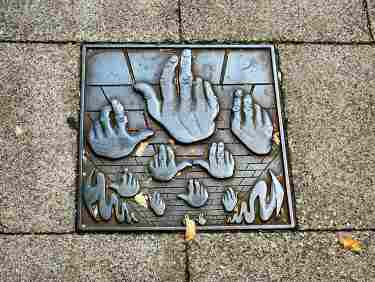
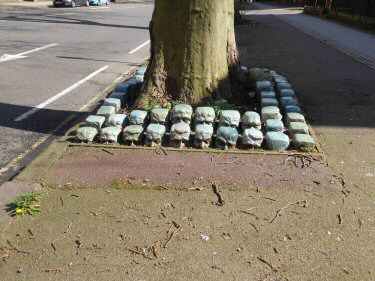
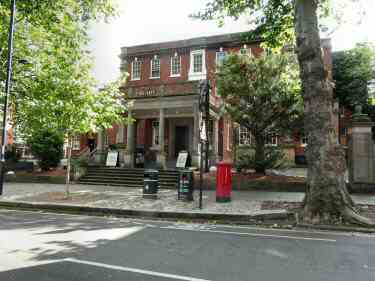
FRIENDS’ MEETING HOUSE
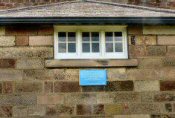
In Simpson’s book, the ‘History and Antiquities of Derby.’ The Quakers were mentioned as having set up one of the earliest establishments of their faith in the town. The Friends Meeting House was built in the early 1800s for the Quakers. It is believed to contain masonry of considerable antiquity from the old Hospital of St Helen.
GEORGE INN
The yard at the George Inn was used for theatrical performances in Elizabethan days. A balconied extension was built so that patrons could watch that and other events. In 1850, twelve carpenters founded the Derby Co-operative Society in George Yard. The original inn closed in 1853 and following several name changes and a size reduction, it is now known as Jorrocks.
GREEN LANE
Green Lane was originally called Green Hill. It runs from Victoria Street to Normanton Road, where it turns southwest. It was originally the main road between Burton and Derby before Abbey Street was constructed in the 1820s. The cast-iron milepost, on the opposite side of Green Lane to the Hippodrome, is inscribed – Burton 11 miles.
GUILDHALL
The Guildhall Theatre, owned by Derby City Council, holds several concerts, plays and recitals but is currently closed for repair. There is a labyrinth of tunnels and catacombs running under the Guildhall. In Victorian times they were used to take prisoners from the old Police Station in Lock-Up Yard to the Assizes that were held in the Guildhall.
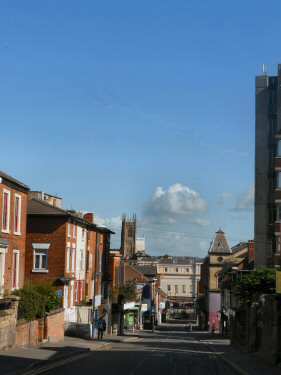
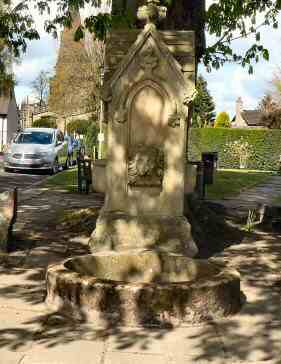
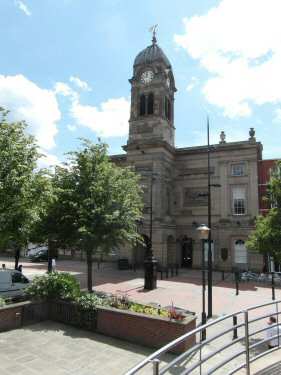
HANDYSIDE’S BRIDGE
Situated behind Haslam’s former factory on City Road is a fine bowstring bridge. It was built by Andrew Handyside in 1877 and crosses the River Derwent. Handyside established his Britannia heavy engineering works and iron foundry in 1848. Originally, he produced ornamental and architectural ironwork but later became involved with railway architecture. The bridge formerly carried the Great Northern Railway’s Nottingham to Derby line between North Parade and City Road and remained in use until closed by Dr Beeching. There was a public footway along the near side of the structure originally. But this was later removed when the listed bridge was renovated. Since then, pedestrians have used the main span, walking where the tracks were once laid.
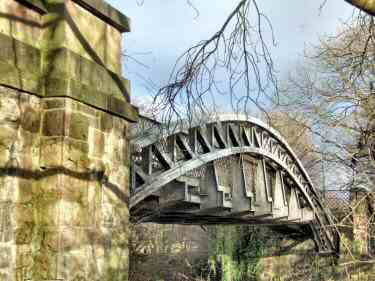
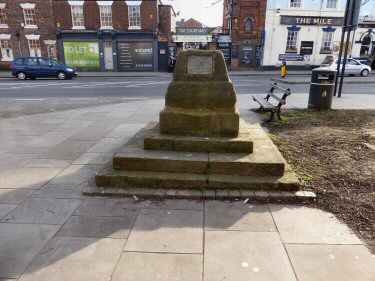
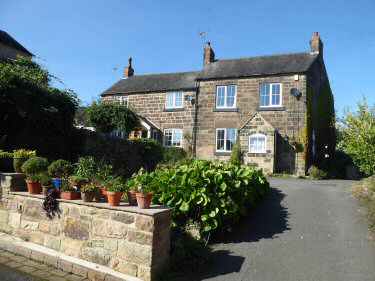
HEADLESS CROSS
In 1981 the headless cross was moved back to its present location in Friar Gate. During outbreaks of the plague, all public gatherings were discontinued. Food was left near the cross by local farmers, vigorously chewing tobacco, to prevent the spread of the disease! The hollow in the top of the stone was filled with vinegar, to act as a disinfectant for the coins left in payment.
HOLBROOK
The village lies on the southeast edge of the Pennines and was once on a major transport route. When the Portway and turnpike road ran through the parish. Large upper windows are still to be seen in some houses indicating that framework knitters once worked in the village. For some years the Midland Railway had a station at Coxbench, but that is now put to other uses.
HORSLEY
Horsley is an attractive little village with a main street lined by mature trees. It has a church, chapel, village green with a pretty chestnut tree, a school, pub, village hall and just on the outskirts a golf course. The three spring water fountains that were presented to the village, in 1824 by the Rev. Sitwell are called Blanche, Rosamund and Sophia.
